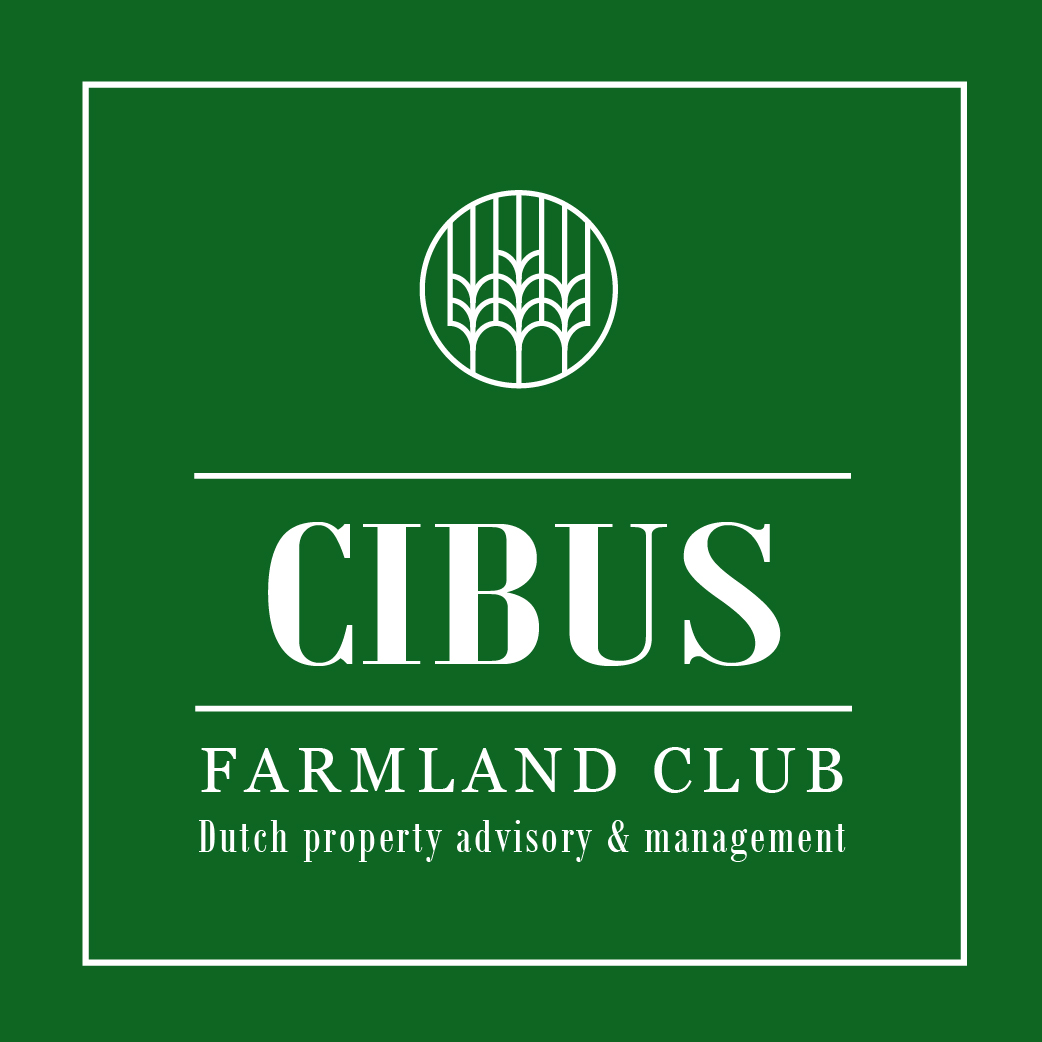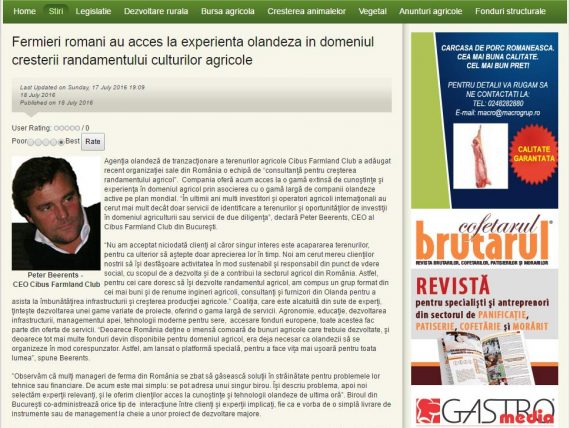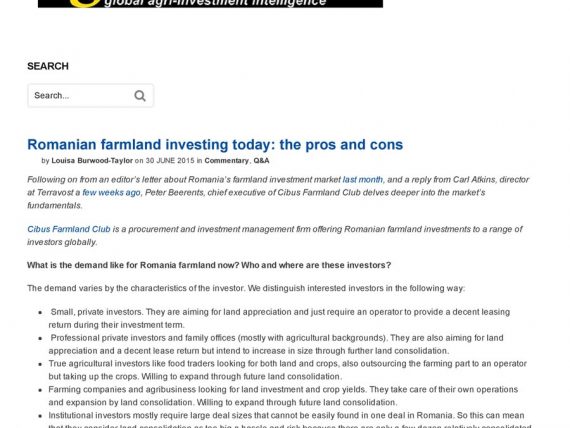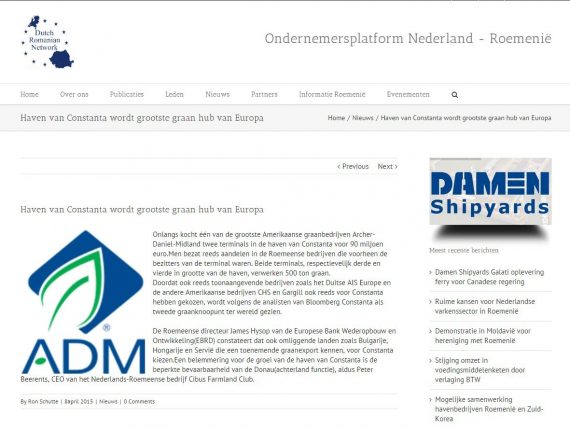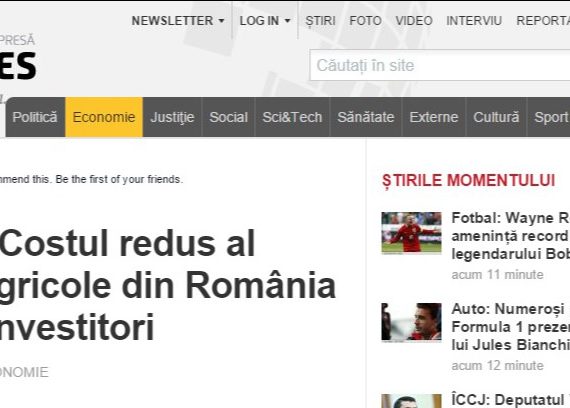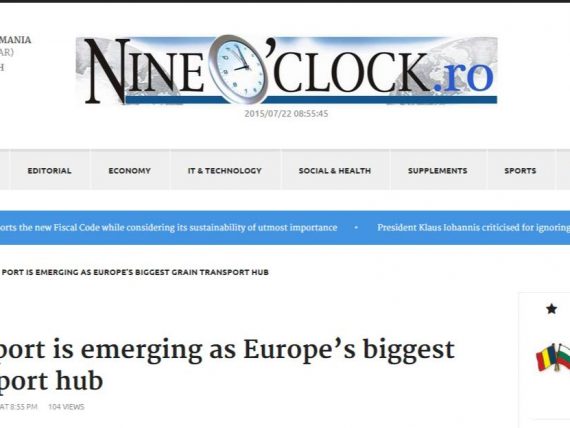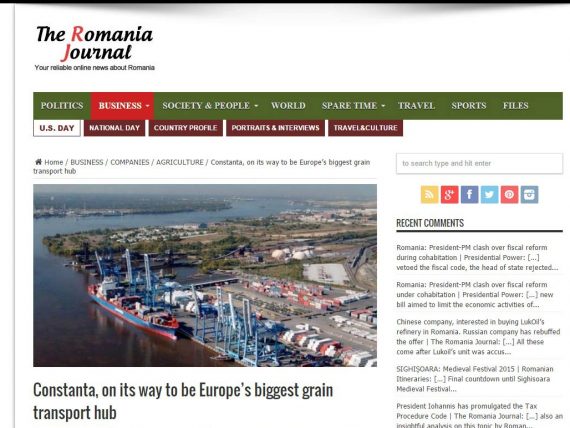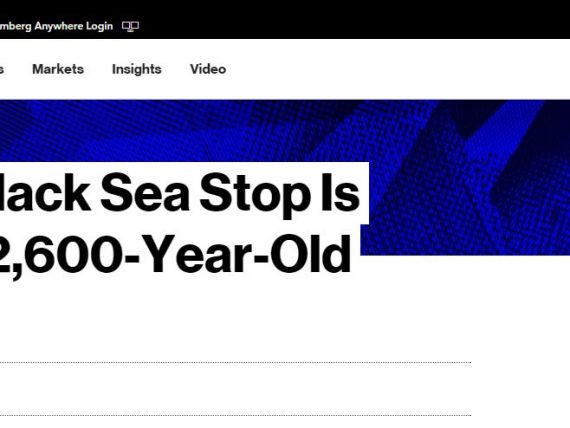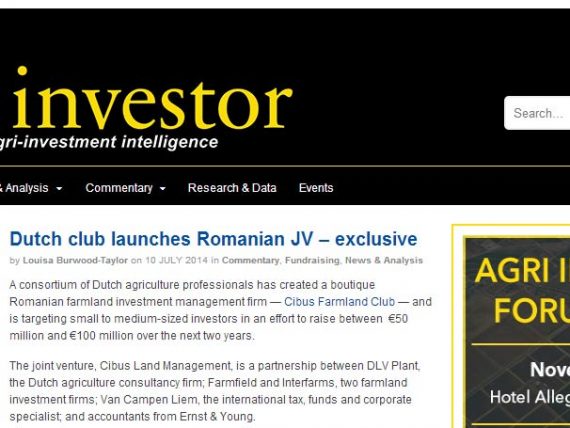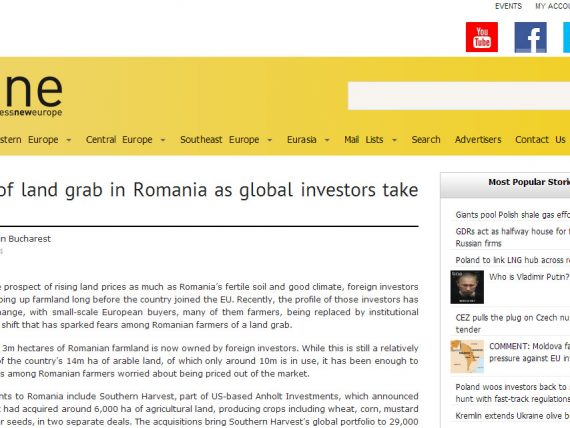Bloomberg
Bloomberg Rudy Ruitenberg
October 24, 2014
Link to article
Romania Farmland Costing Fraction of U.K. Lures Investors
Oct. 24 (Bloomberg) — Investment managers putting money into Romania’s farms are paying a fraction of prices in Germany or the U.K., buying the potential to boost yields by joining fragmented plots and improving farming methods.
German farm manager ASI Europe GmbH oversees about 4,000 hectares (9,884 acres) in Romania, the Netherlands Cibus Farmland Club is developing a farm project there and U.K.-based Velcourt Group Plc announced last year it was entering the country. A hectare of Romanian farmland cost an average $6,461 in 2012, compared with $18,521 in Germany and $25,575 in the U.K., data from U.K. realtor Savills Plc show.
Romania has the European Union’s most divided farmland ownership, with 3.86 million farms in 2010 that made up 31 percent of the EU total, a legacy of the 1989 overthrow of communist leader Nicolae Ceausescu and land restitution that followed. The average size of a Romanian farm was 3.4 hectares, compared with the EU average of 14.2 hectares and 53.9 hectares for France, the bloc’s biggest agricultural producer.
If you want to continue to grow, land consolidation is the only way, Peter Beerents, chief executive officer of Cibus Land Management Srl, said in e-mailed comments on Oct. 22. When small plots can be added to a larger whole, in general the value doubles.
Romanian farmland prices on average rose about 40 percent a year between 2002 and 2012, double the global average, according to Savills. The value of French and German farmland on average increased 5 percent to 10 percent a year.
Land Reform
Growing investor interest in Romanian farms means land reform there may be completed within the next five years, according to Beerents. Land consolidation is technically and financially feasible, Beerents said.
A plot of uncultivated wasteland in Romania of 1 to 5 hectares was worth 1,900 euros ($2,432) a hectare last year, compared with 3,900 euros a hectare for a larger plot that had been in production for more than three years, Cibus data show. Prices could double in five to six years, Beerents says.
Romania had 7.05 million family farm laborers in the 2010 census, 30 percent of the EU total, while the country’s farmland accounts for 7.6 percent of agricultural land in use, Eurostat data show.
The number of landowners means expanding a corporate farm in the country to 5,000 hectares, a size that allows for maximum efficiency, may require years of negotiations with easily 500 to 1,000 family members, Beerents said.
“Subsistence Farms”
Half the area is made up of subsistence farms unable to access good technology, said Toma Dinu, dean of the Faculty of Management of the University of Agronomic Science in Bucharest. It’s a secondary occupation, they can’t farm efficiently.
Wheat yields in Romania have risen since 2003 and are still less than half those in France and Germany. The fragmented nature of Romanian agriculture hurts productivity, and family farmers use too little fertilizer and lack machinery, Dinu said.
Romanian farmers used an average 49 kilograms (108 pounds) of nitrogen, phosphate and potassium fertilizer per hectare in 2012, less than half the 113 kilograms applied in France, based on data from the International Fertilizer Industry Association.
There’s still a way to go, said Peter Falkenstein, a senior consultant at ASI, which has bought more than 25,000 hectares of land in Romania for investors since 1999. The soils have deteriorated over the past 20 years. This takes time, getting soils back to good productivity.
Danube Water
A communist-era irrigation system using Danube water is too costly because of energy use, and has fallen into disrepair, Dinu said. That leaves farmers dependent on rainfall, making weather the limiting factor for Romanian grain production.
Romanian farming benefited from the country’s 2007 entry into the EU, as subsidies made working the land more financially rewarding and attracted investors, Dinu said. Agriculture subsidies rose to 1.68 billion euros in 2012 from 1.61 billion euros the previous year and 575 million euros in 2010, Eurostat data shows.
Romania’s five-year average wheat yield has risen to 3.2 tons per hectare from 2.92 tons in 2003. In contrast, French farmers on average gathered 7.16 tons of soft wheat per hectare in the past five years and Germany averaged 7.65 tons, EU data show. Romania gathered 7.52 million tons of wheat this year compared with 7.28 million tons last year, Eurostat data show. France’s soft-wheat production will be 37.37 million tons, crop office FranceAgriMer estimated last month.
Foreign investors in the fields of Romania brought spending on machinery, use of improved seeds and innovation in cultivation, such as minimal tilling, according to Dinu.
Using existing arable land and lifting yields for key commodities closer to those of more advanced countries, Romania could boost production volumes by at least 30 percent, according to Miljan Zdrale, a senior banker at the the European Bank for Reconstruction and Development.
It’s a stable country, it has Black Sea access, it’s an EU country, Zdrale said. The potential is there, that is the bottom line.

